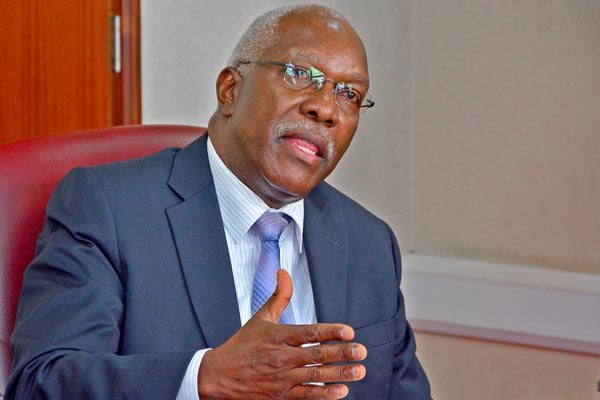
Auditor General, Mr John Muwanga.
The Auditor General has warned government to cut back on its increasingly growing appetite to borrow from commercial banks, noting it presents a risk to growth and access to private sector credit.
In a report for the period ended June 2020, the Auditor General indicated that government’s non-concessional loans borrowed from commercial banks had spiked over the past three-years, growing from just Shs192.6b in the 2017/18 financial year to Shs2.8 trillion for the period ended June 2020.
The loans, Auditor General John Muwanga said, are not only a danger to private sector growth but also expose government to high interest rates, which are mostly determined by market movements.
“Government debt appetite for the past three financial years from 2017/18 to 2019/20 was heavily moving to non-concessional loans such as loans from commercial banks,” he said, noting that the loans are characterised by very short repayment periods compared to concessional loans that attract a minimum of 30 years.
Last year, the Ministry of Finance indicated in its Performance of the Economy report that it had been forced to borrow, particularly from Stanbic and Trade Development Bank, formerly PTA Bank, to mitigate Covid-19 disruptions that had constrained revenue mobilisation.
However, the report did not indicate how much government had borrowed from the two banks.
Earlier in 2019, Minister of State for Planning David Bahati, had presented a request to Parliament in which government had sought to borrow Shs2.46 trillion from Stanbic Bank and Trade Development Bank to fund budget deficits for the 2019/20 financial year.
In his report, Muwanga said there was need to prioritise concessional financing as the most preferred means of meeting financial and development requirements, noting that commercial bank are pegged on floating interest rates that change with market dynamics. The report also noted that at least 82 per cent (of the Shs2.8 trillion) had been used for budget support instead of infrastructure development as it had been indicated in the financing strategy.
However, in response to the Auditor General’s queries, the Ministry of Finance noted, according to the report that borrowing from commercial banks, especially during the 2019/20 financial year, had been a temporary measure given that Covid-19 had disrupted revenue mobilization yet it had at the same time created a crisis that needed immediate mitigation.
The report noted that low revenue collections had disrupted the implementation of mid-term debt strategies for the 2019/20 financial and the response to social-economic impact of Covid-19.
Last month, Bank of Uganda said it was working on a strategy to reduce domestic borrowing to 1.1 per cent in the 2021/22 financial year, before falling to under 1 per cent by 2023.
This, the Central Bank, indicated, sought to create enough credit for the private sector, which has been crowded out but the increased appetite for domestic borrowing.
Risky
According to Dr Fred Muhumuza, an economist and lecturer at Makerere University, banks were taking advantage of uncertainties to offer floating interest rates, which in most cases vary upwards in case of volatilities.
Therefore, he said, this is risky for government given that loans become expensive for taxpayers and suffocates lending to the private sector.




No comments :
Post a Comment